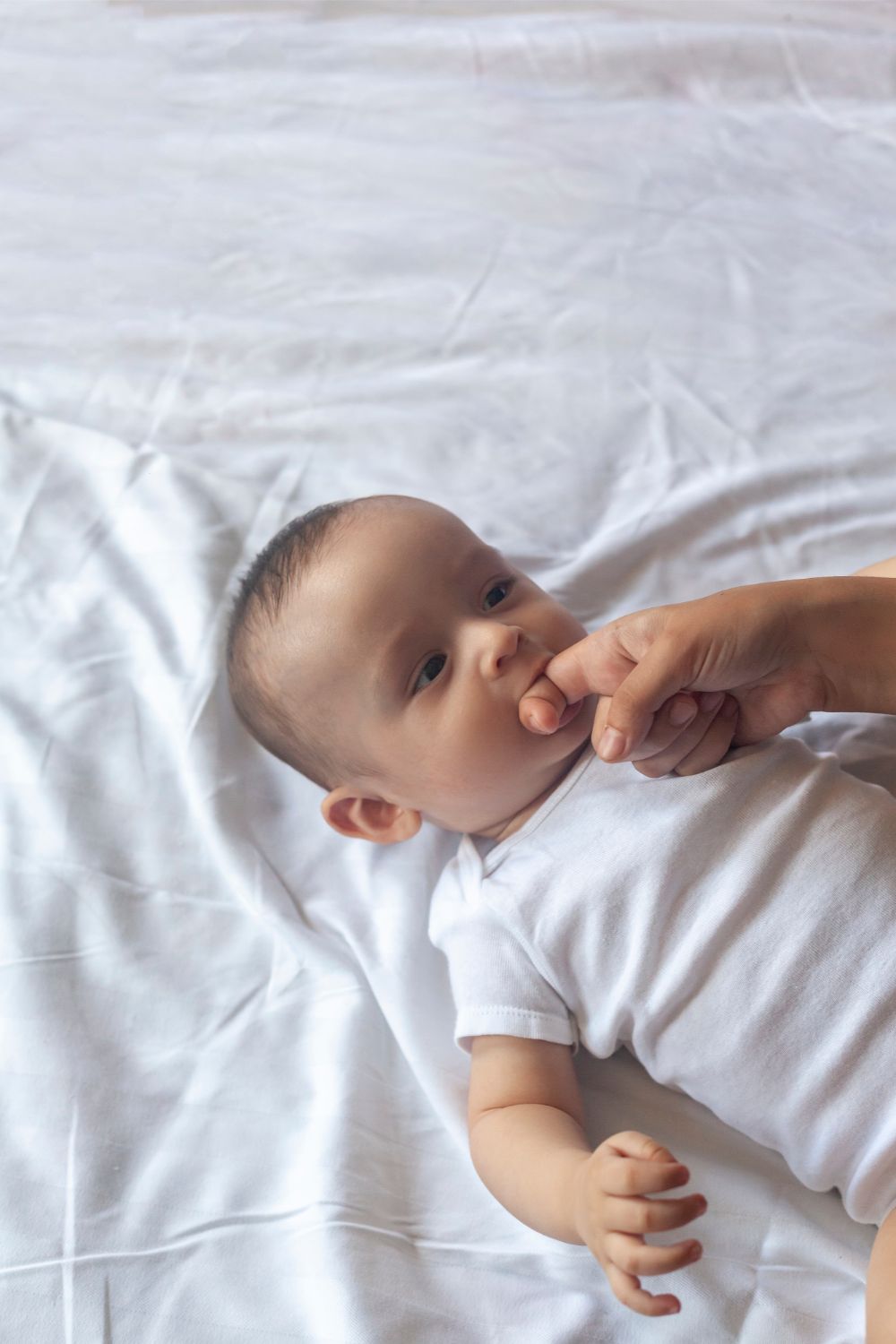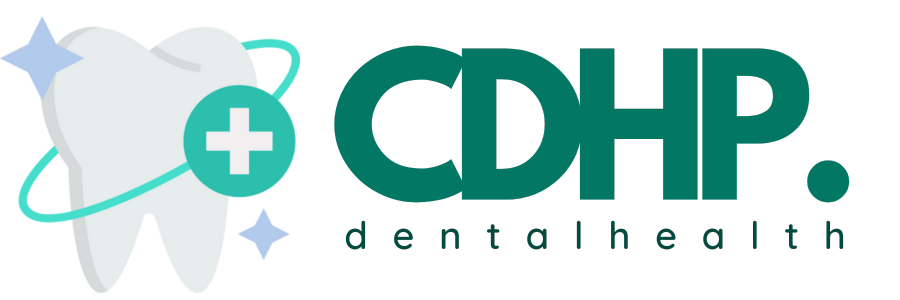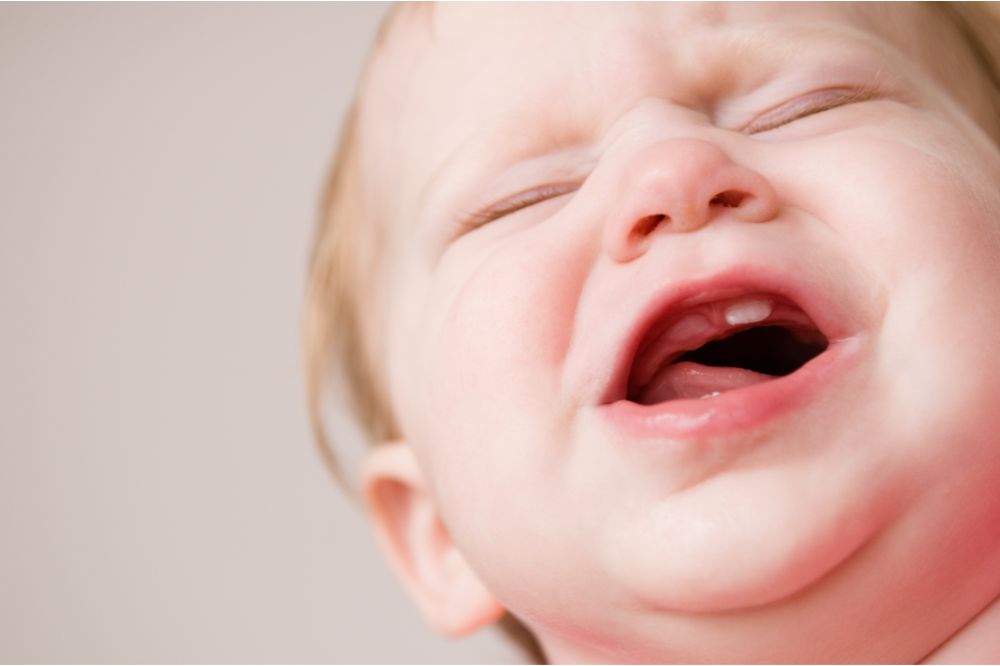When a baby’s first teeth erupt, it’s a big milestone for the baby and the parents alike, so it’s no wonder that many parents keep a close eye on their little ones to see the first signs of teeth breaking through.
But then any sign that things aren’t going quite as expected is enough to throw many parents into a spin, so to help put your mind at rest when it comes to teething, in this post, we answer the question, what if baby gets upper teeth first?
If you want a preview of the process of tooth eruption, you can also check out this video before reading on.
What if Baby Gets Upper Teeth First?
What’s the normal pattern of tooth eruption in babies?
Before we talk about so-called “abnormal” tooth eruption, it will be useful to remind ourselves of the order babies’ teeth usually appear and at what age.
Almost all babies are born with no teeth, and they will stay this way until they reach the six-month mark when the first teeth appear.
The first teeth to erupt are usually the front teeth at the bottom, technically known as the lower central incisors. However, they may appear several months before this, and they may not erupt until several months later.
Next come the upper central incisors, followed by the upper lateral incisors, the top teeth on either side of the central ones.
The central ones usually appear at about eight months, followed by the lateral ones a month later – although, again, the timing may vary, and these upper incisors may erupt some time after the eight- and nine-month mark respectively.
After this, the lower lateral incisors appear, and this may occur a month or more after the upper lateral incisors have appeared.
The upper first molars usually make an appearance from around the 13-month mark, and the corresponding lower molars can appear a month or more later.
Next come the upper canines, which generally erupt between around 16 and 22 months, and the lower canines, from around 17 to 23 months.
Finally, the lower second molars will erupt at around 23 to 32 months and the lower versions at around 25 to 33 months.
All 20 teeth should be present by the child’s third birthday.
Baby Teeth Order of Appearance

Here’s a summary of when you should expect a baby’s teeth to erupt:
- Lower central incisors – 6-10 months
- Upper central incisors – 8-12 months
- Upper lateral incisors – 9-13 months
- Lower lateral incisors – 10-16 months
- Upper first molars – 13-19 months
- Lower first molars – 14-18 months
- Upper canines – 16-22 months
- Lower canines – 17-23 months
- Lower second molar – 23-31 months
- Upper second molar – 25-33 months
A guideline, not a rule
Several things should be clear from all this, and the first is that a large amount of variation is possible, even for babies who follow this pattern exactly.
Second, as things progress, a wider date range is possible for the later teeth than it is for the earlier teeth.
And third, there is some overlap, so even if the teeth erupt within the dates of what is described above, it is still possible for them to erupt in a different order than “expected”.
But even more important than this is that what we have outlined above is just a guideline for what to expect and not a set of rules that babies have to follow to be considered “normal”.
Every baby is different, and the pattern of tooth eruption they follow is not fixed – so the message should be that even “abnormal” tooth eruption is normal, and as long as all of your baby’s teeth are in place by their third birthday, you have nothing to worry about.
While it is far more common for a baby’s lower central incisors to erupt first, followed by the upper central and then lateral incisors, there is nothing to say that it must happen this way, and indeed many babies grow their upper teeth before the lower ones erupt.
So in short, to address the central question of this post – namely, what if a baby gets upper teeth first? – the answer is, absolutely nothing.
If a baby’s upper teeth appear before the lower ones, it’s perfectly normal, it’s nothing to be concerned about and all you need to do as a parent is to be patient and wait for the lower teeth to follow – which in almost every case, they will.
When should you worry?
Parents are natural worriers, especially first-time parents, and most people spend lots of time reading up about babies and the milestones they should be passing and fretting if their baby is behind.
So when is it a problem if your baby is behind on teething?
As we’ve already mentioned, there is a huge range of possible time ranges for babies’ teeth to develop. Some babies have their first teeth at four months – and some are even born with one or more teeth or may start growing them after just a couple of weeks.
At the other end of the scale, some babies don’t have any teeth until after their first birthday, so the advice is still just to be patient.
However, if your baby passes his or her first birthday and there are still no signs of teeth in the month or two after, it might be time to see a pediatrician or pediatric dentist.
Similarly, if your baby’s upper teeth erupt first and there are still no signs of the lower ones emerging more than six months later, it might also be time to check in with a professional, just to reassure yourself that nothing is wrong.
Possible complications arising from “abnormal” tooth eruption
Having said that there’s nothing to worry about if your child’s teeth don’t come through in the “proper” order, you still need to keep an eye on things to make sure the eruption pattern doesn’t lead to any complications.
One of the main problems with how a child’s teeth erupt is if it doesn’t leave enough space for the remaining teeth to fill.
If this happens, it can cause subsequent teeth to grow out at strange angles, and due to the orientation of the teeth, it can make it harder to keep them clean, in turn leading to cavities or other similar problems.
Finally, baby teeth that grow at odd angles can have a knock-on effect when it comes to permanent teeth, and having crooked baby teeth can be an indicator that the permanent teeth will also not be straight.
A more serious – but much rarer – problem is impacted baby teeth, where teeth that have already erupted block the growth of subsequent teeth, sometimes stopping them developing properly.
If this happens, you should take your child to see a dentist for advice about what to do.
FAQs
How can you tell if a baby is teething?
The experience of teething is different for each child, and for some babies, the process is relatively painless while others seem to suffer significantly.
One of the tell-tale signs is if a baby begins drooling more than usual, and they may also try to put things in their mouths or chew things more than normal.
Some people also say that babies tend to touch their ears more frequently when new teeth are on the way. This makes sense since the mouth, jaw and ears are all connected – but this is more an anecdotal story rather than anything backed by hard science.
Sometimes babies may cry more, become fussier or undergo sleeping or eating disruption during teething.
This will usually pass after a day or two, but if it lasts longer, you can consider giving your baby special baby-friendly pain relief to help get through any particularly difficult nights.
However, you should always seek the advice of a professional concerning the dose before giving your baby medication such as this – and you should make sure the medicine is suitable for babies since giving babies adult medication can be extremely dangerous.
Giving them something cool to chew on is also a good solution for providing them with some relief from the pain.
When should you start cleaning a baby’s teeth?
As soon as a baby gets his or her first tooth, you can start brushing it. Start with just a toothbrush and water – there’s no need to use toothpaste just yet.
When a few more teeth appear, you can start using baby-friendly fluoride toothpaste, but you should just smear a tiny amount on the brush.
By the time a child is old enough to spit toothpaste out, you can then start using a pea-sized amount of toothpaste, but you’ll still need to supervise their brushing until the age of about six or seven.
Is it bad luck if a baby’s upper teeth erupt first?
No, absolutely not. This is an old wives’ tale that has no basis in reality. If your baby’s top teeth come through before the bottom ones, it has no deeper meaning and will not bring luck of any kind, good or bad, to anyone concerned.
A guideline to follow and nothing else
As we’ve seen, all babies are different, and the “expected” pattern of tooth eruption is nothing more than a guideline for what to expect.
However, many babies just do their own thing and develop in their own time, so if your baby doesn’t follow the expected norm, it’s nothing to worry about because everything will turn out fine in the end.

